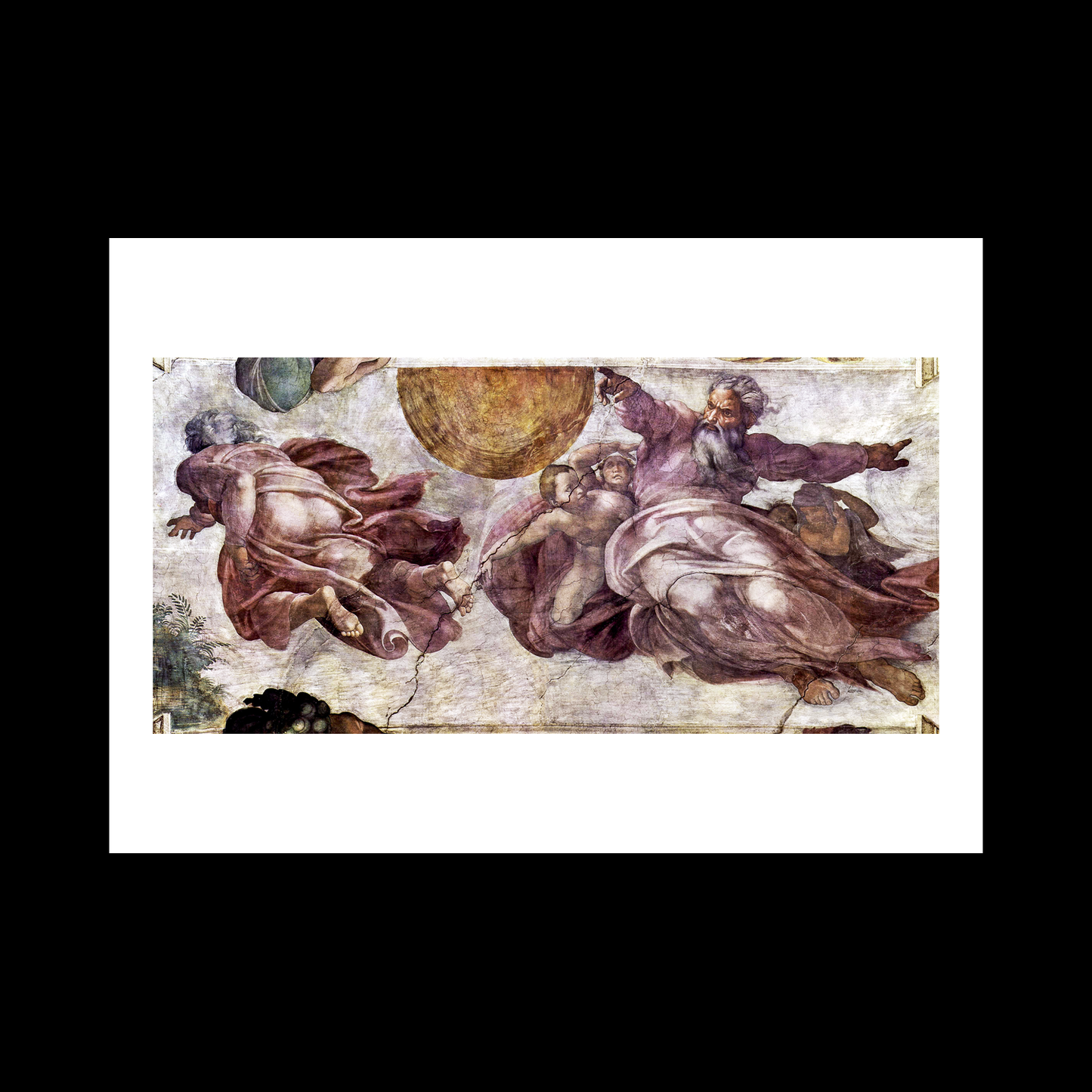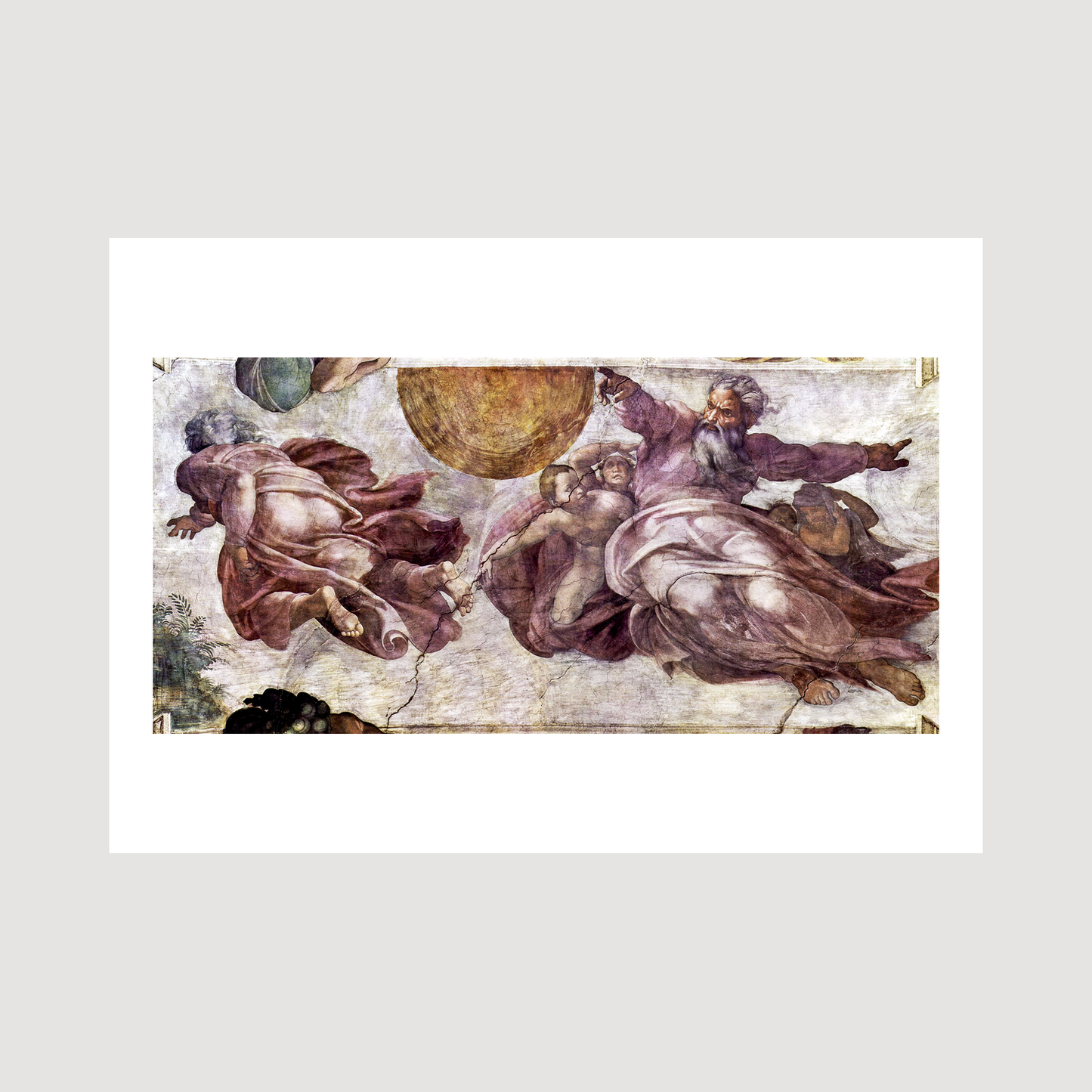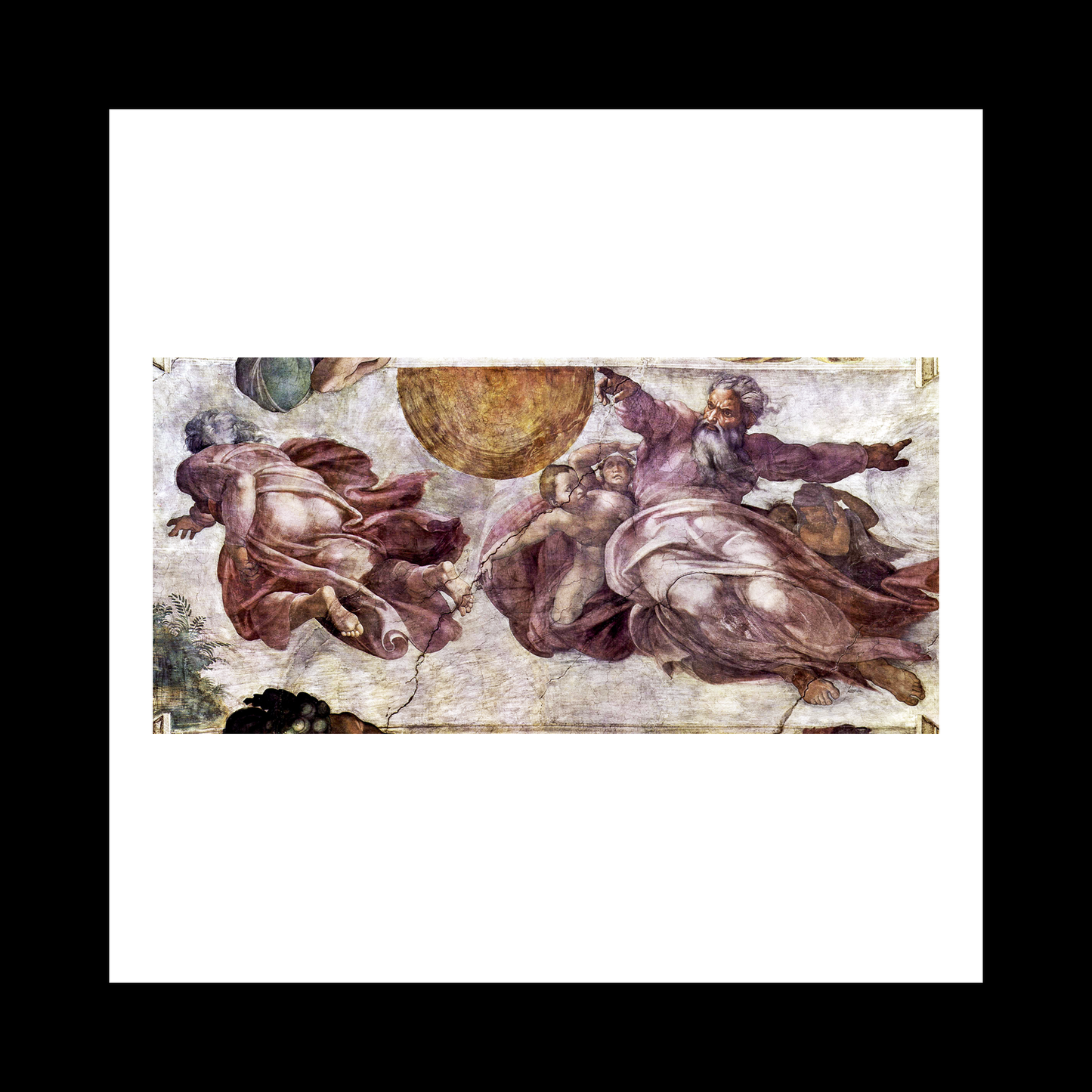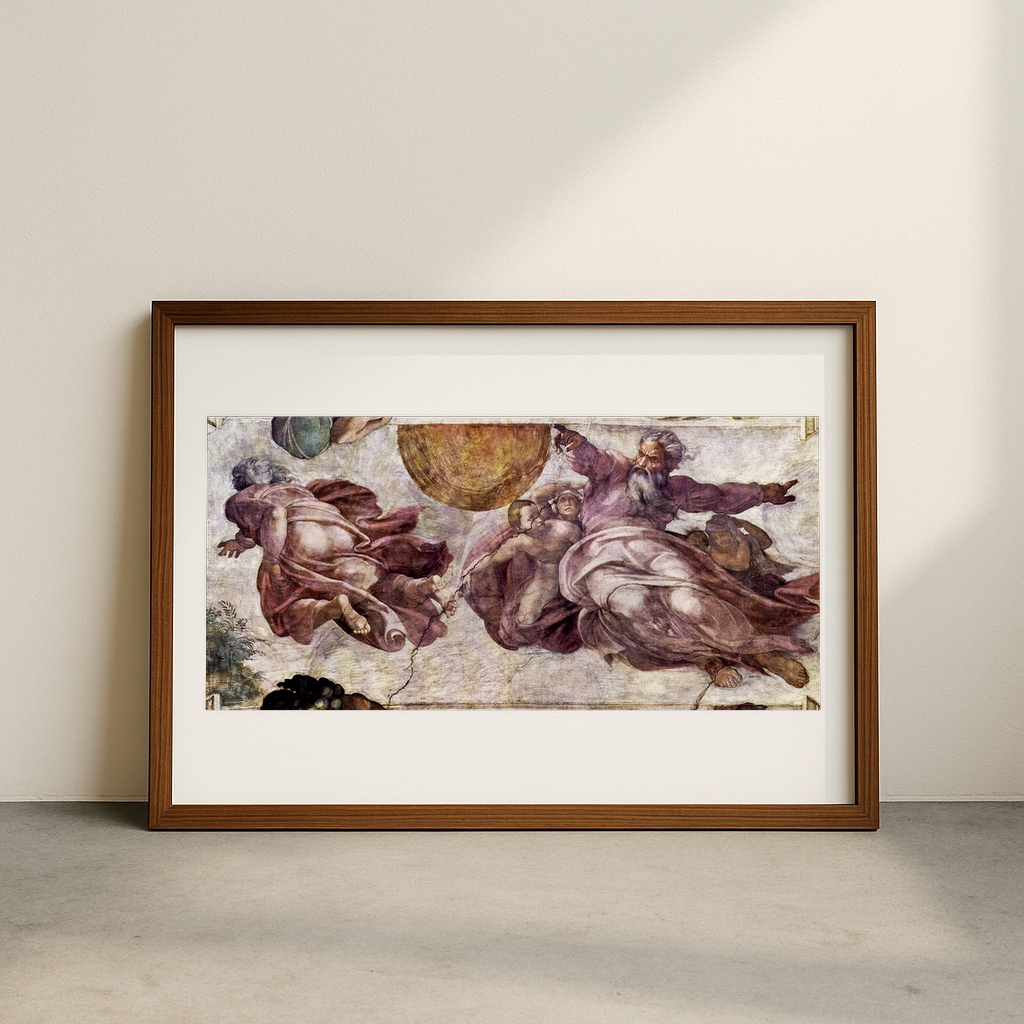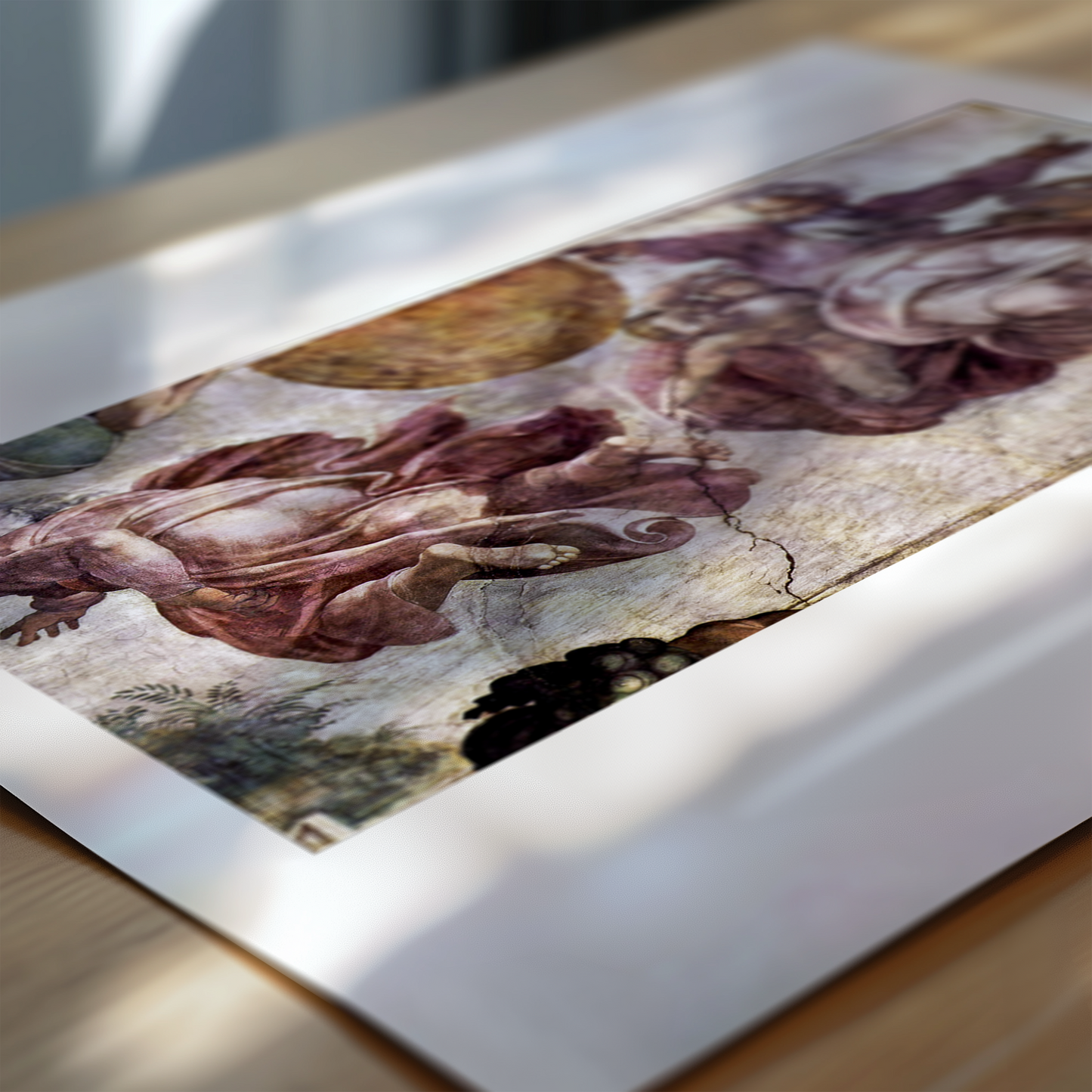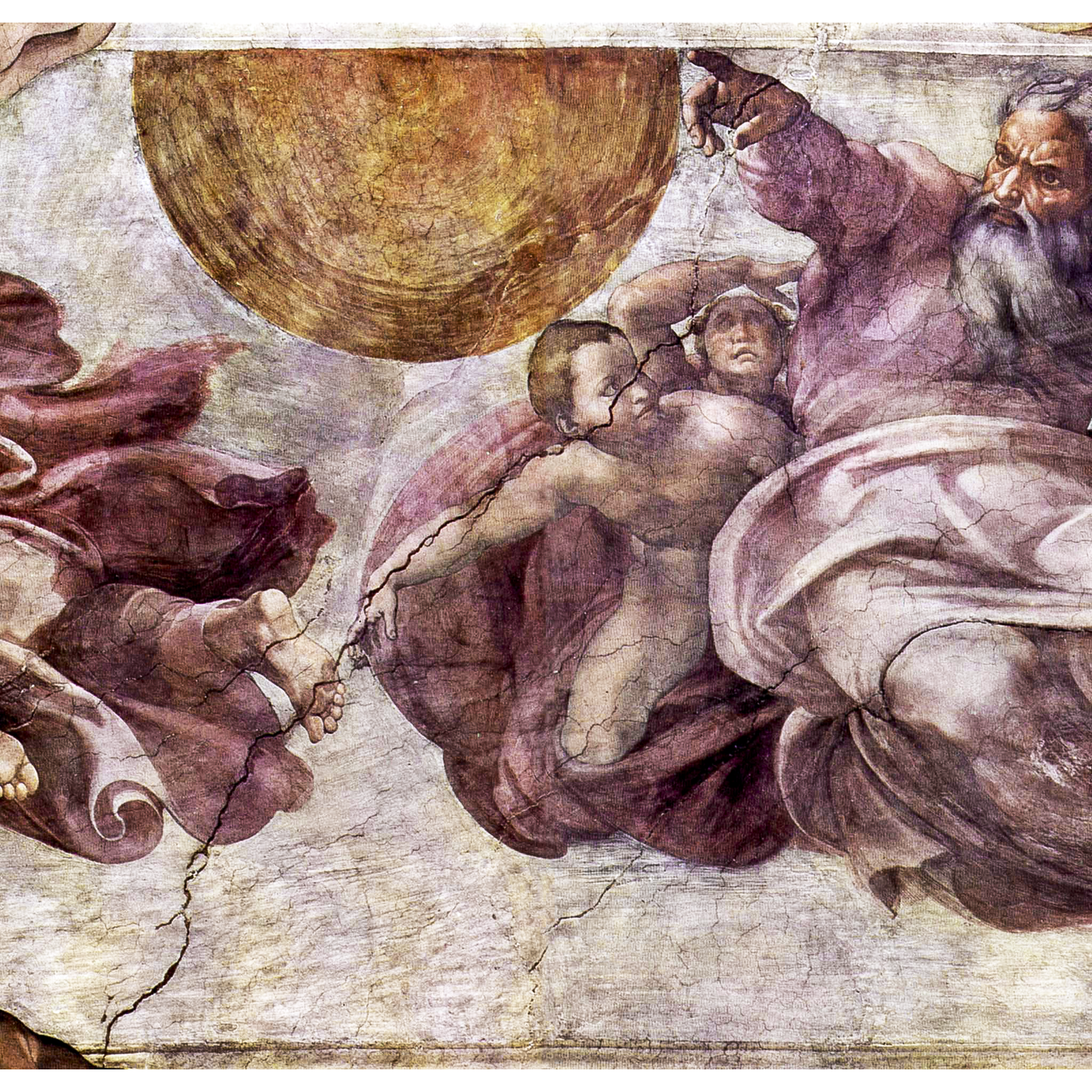1
/
of
6
Fresco in the Sistine Chapel
Fresco in the Sistine Chapel
Regular price
£12.45 GBP
Regular price
Sale price
£12.45 GBP
Taxes included.
Quantity
Couldn't load pickup availability
Michelangelo's Sistine Chapel ceiling fresco stands as one of art history's most extraordinary achievements, completed between 1508 and 1512. This monumental work spans over 500 square metres and features over 300 figures painted in vibrant colours that have endured for centuries. The central narrative depicts nine scenes from the Book of Genesis, with the Creation of Adam being perhaps the most recognised panel, where divine and human fingers nearly touch in a moment of profound symbolic meaning.
The technical execution of this work reveals Michelangelo's exceptional skill and determination. Despite his initial reluctance to take on the project - considering himself primarily a sculptor - he developed innovative fresco techniques to achieve unprecedented levels of anatomical detail and emotional expression. Working in uncomfortable positions on high scaffolding, he painted the ceiling while lying on his back, a physically demanding process that took its toll on his health and eyesight.
What makes this work particularly fascinating is Michelangelo's bold interpretation of biblical themes through a Renaissance humanist lens. He depicted God and divine figures with striking physicality and human characteristics, breaking from medieval traditions of flat, ethereal representations. The artist incorporated complex architectural elements and invented a trompe l'oeil framework that creates an illusion of depth and space, making the flat ceiling appear three-dimensional. His use of bright, bold colours - restored to their original vibrancy in the late 20th century - demonstrates his mastery of fresco technique, where pigments are applied to wet plaster, requiring swift and confident execution.
The work's enduring influence stems from its revolutionary approach to religious art, combining classical aesthetics with Christian theology in a way that transformed Western art. Michelangelo's figures, with their dynamic poses and emotional depth, exemplify the High Renaissance ideal of human dignity and divine inspiration, while his innovative composition continues to inspire artists and viewers alike.
View full details
The technical execution of this work reveals Michelangelo's exceptional skill and determination. Despite his initial reluctance to take on the project - considering himself primarily a sculptor - he developed innovative fresco techniques to achieve unprecedented levels of anatomical detail and emotional expression. Working in uncomfortable positions on high scaffolding, he painted the ceiling while lying on his back, a physically demanding process that took its toll on his health and eyesight.
What makes this work particularly fascinating is Michelangelo's bold interpretation of biblical themes through a Renaissance humanist lens. He depicted God and divine figures with striking physicality and human characteristics, breaking from medieval traditions of flat, ethereal representations. The artist incorporated complex architectural elements and invented a trompe l'oeil framework that creates an illusion of depth and space, making the flat ceiling appear three-dimensional. His use of bright, bold colours - restored to their original vibrancy in the late 20th century - demonstrates his mastery of fresco technique, where pigments are applied to wet plaster, requiring swift and confident execution.
The work's enduring influence stems from its revolutionary approach to religious art, combining classical aesthetics with Christian theology in a way that transformed Western art. Michelangelo's figures, with their dynamic poses and emotional depth, exemplify the High Renaissance ideal of human dignity and divine inspiration, while his innovative composition continues to inspire artists and viewers alike.
